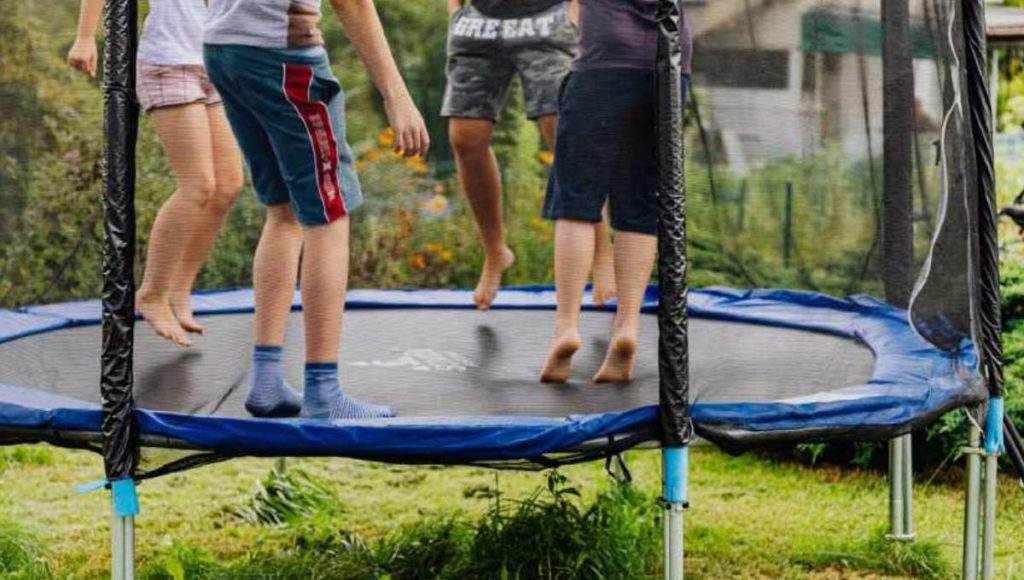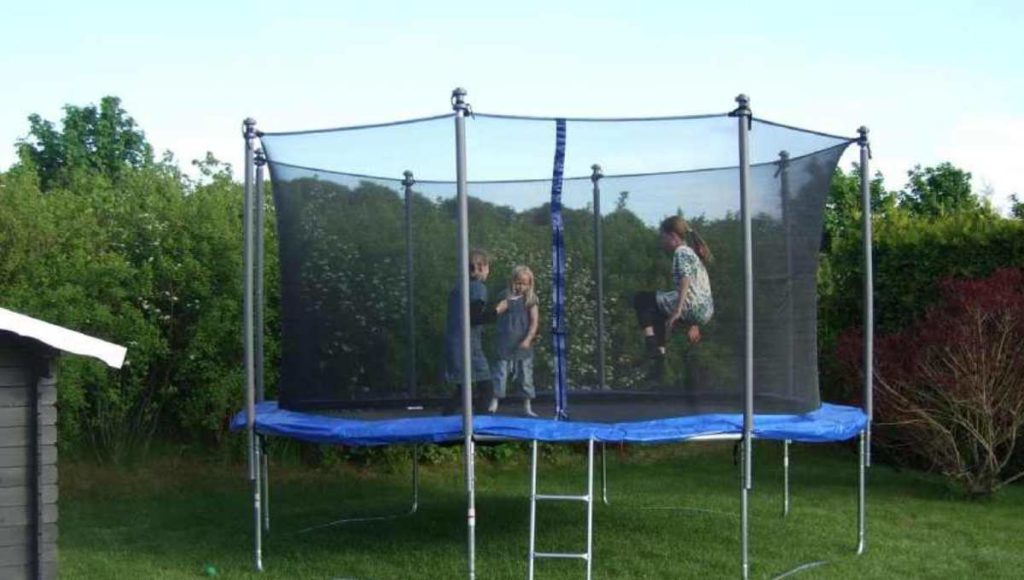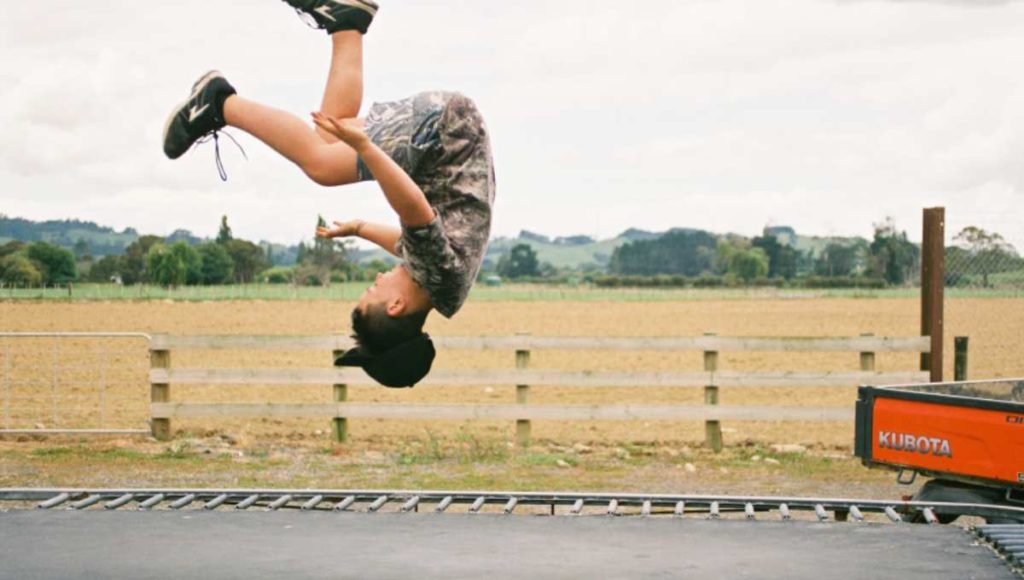How many times did we laugh watching the trampoline fail compilation on YouTube? While it looks funny but the grim truth of trampoline-related severe injuries is very real. Do you think are indoor trampoline parks safe?
Do you know that nearly one million people have visited the emergency room between 2002 and 2011?
Such grim statistics concern the parents with a question, Are famous trampoline parks safe enough or not?
According to CBS News reports, six people have died from 2014 to 2019 in the indoor trampoline parks.
Data from the U.S. consumer product safety commission shows that at least 22 people have died in trampoline-related accidents between the years 2000 to 2009.
I understand your concern. But hear me out. Have you ever been to an indoor trampoline park yet? No? No worry there are some great useful facts that you should know about it.
I’d suggest you to take a look at the pros and cons of a trampoline so that you can get some more idea about this!
What is an indoor trampoline park?

An indoor trampoline park means where several numbers of trampolines are merged to create a giant trampoline. There are other indoor activities available to take parts, such as foam pits, dodgeball and basketball courts, and airbags. My daughter and I had the most fun in the foam and ball pit.
So an indoor trampoline park doesn’t mean that there are only large trampolines sitting there. You are bound to find other recreational activities for sure.
Are indoor trampoline parks safe or trouble in paradise?
If you want my opinion, then no, it’s not safe because you’re 200 to 300 times more likely to get injured from bouncing on a trampoline than bestriding on a roller coaster says the Champions firm.
A study conducted by the American Academy of Pediatrics showed the sudden surge of trampoline-related injuries in the trampoline parks.
Despite all these risks and potential to fatal injuries, the popularity of trampoline parks is growing rapidly. In the late 1990s, there were roughly two to three trampoline parks available on the entire country.
And today, the total number of trampoline parks is close to a thousand. Why would such a dangerous activity get so much recognition? It’s because the fun to bounce up and down on a trampoline is like nothing you’ve ever experienced before.
Since trampoline parks are more popular amongst kids, let’s find some statistics to fathom the probability of an injury.
Statistics of trampoline safety for kids
To reduce trampoline-related injuries, the American Academy of Orthopaedic surgeon and the American Academy of Pediatrics projected trampoline usage guidelines.
Please note that the following rules and regulations regarding trampoline usage safety excluded professional trainers and sports personnel. The regulations only concern home and park trampoline use.
Some noteworthy point outs of the regulations are as follows-
- One out of three injuries will occur where multiple children are bouncing.
- When larger children use the trampoline with smaller children, the risk of getting injured increases to 14 times.
- A lot of data supports the most severe injuries when a kid or person springs out of control and lands on the outside of the trampoline.
- Believe it or not, nearly half of trampoline injuries in kids happen under an adult’s supervision. Your eyes won’t be useful when your kid bounces out of the trampoline within the blink of an eye.
- Nearly 30-36% of bone fractures occur to kids under the age of six.
- Over 60% of total injuries involve the ankle areas and beyond.
- Kids and adults both tend to do somersault flips. This acrobatic maneuver is responsible for 10-17% of injuries in the neck and head areas.
- Unless safety nets surround the entire trampoline, your kid could get hurt despite falling on pads or foams outside the trampoline. And even if they land at the edge of the trampoline bed, there’s still a strong possibility of fatal injuries.
” There is no safe age for a child to jump on a trampoline.” Dr. Randall Loder, chairman of Indiana university department orthopedic. Also an orthopedic surgeon at Riley.
Children get bone fractures and break relatively easier than adults because kids have less bone density, compared to an adult person.

How can we reduce trampoline accidents?
I’m not going to give my opinion on how to prevent the trampoline from failing. Better, let me give you both AAP and IATP made an overview of recommendations for safer trampoline activities.
American Academy of Pediatrics recommends-
- Don’t do somersaults. They are the leading cause of permanent disabilities and fatalities because you are more like to injure your cervical spine.
- Children below the age of six should never be on a trampoline.
- One child, one trampoline. Don’t let others share, especially if that other person is heavier because the elastic energy of the trampoline surface turns serious into kinetic energy. Your children will be shot off and away from the trampoline if someone heavier lands right beside the child.
- In every trampoline park, there is plenty of staff, and the referee supervises the children. But still, you should never let your child leave your sight. Better if you stay close by. I’m talking about staying at hands distance. I remember catching my daughter before hitting the floor. Guess what, she was bouncing on a trampoline.
- Don’t be assured by nettings around the trampoline. Acute injuries occur every day despite taking all the necessary precautions and safety measures. The key is to stay close and be vigilant.
- The trampoline you’re looking to buy, or your child is currently bouncing on, in the spring covered in the pad? If not, then there’s a risk of the spring piercing the trampoline surface fabric and impacting the toes or other body parts.
- Once everyone’s aboard, keep away the ladder. It’ll prevent toddlers from climbing into the party pit. If someone bounces off the trampoline, it’d be better to land on the vertical surface rather than on that stair.
- If you want to buy a trampoline for your home, make sure that the insurance company process trampoline-related damages.
- Parents should understand the possible risks and acknowledge all the safety precautions before allowing their kids and even themselves in a trampoline activity.
- It’s better not to have a trampoline. Why out your life in danger for a little adrenaline rush?
The IATP also added some regulations-
- Before you get on the trampoline, ask the court manager for closer supervision.
- Every IATP compliant park should have a foam pit that should reach the same height as the trampoline.
- Every trampoline park has specific rules and regulations. Read them carefully before you bounce.
- Please stay away from other jumpers. Don’t bounce at the edge of the trampoline. Let the court monitor know if you anyone is not compliant with the rules.
- There should be an IATP membership sticker on the door.
What causes trampoline injuries?
More than 300,000 people were treated, and among them, 110,000 people had to visit the emergency room in 2018 alone, according to the U.S. consumer product safety commission.
The common causes of trampoline injuries
- You are jumping too intensely without understanding your balance and limit.
- You are jumping too close to the edge of the trampoline.
- Don’t try to do any acrobatic maneuver without understanding the aerobics and science.
- Please check the trampoline mat, frame, and spring. Over time, these are damaged, which causes break down during jumping.
- Please try to avoid bouncing several persons at once on a single trampoline.

Trampoline industries are accomodating safety precautions.
I feel the International Association of Trampoline parks focusing on comparative sports-related injuries data. Instead, they should focus on making the bouncy sport safer for both children and adults.
The spokeswoman of the Trampoline association Bethany Evans stated that the total injuries that occur in an average 80 million hours per year on a trampoline are nearly the same number of injuries that happen with other sports activities.
I would say that’s a politician’s answer to a children’s safety issue. She also pointed out the health benefits of trampoline jumping, such as better muscle formations, increased cardiovascular activities, cardio endurance, mental recreation, and social interactions that outweigh the probability of an injury.
I agree with her on this statement. I mean, even walking down the street could end up in an injury. So we all should focus on making the trampoline park safer for everyone else.
And the IATP did just that. They reinforced their staff numbers and trained them to identify potential accidents before occurring. And they also came up with a development program to educate the parents about necessary safety measures.
And by 2021, they will evaluate a third-party service to inspect and validate memberships depending on how well the parents acknowledged the regulations.
Why do Pediatricians advise kids against trampoline use?
Despite some valiant efforts by the IATP, the American Academy of Pediatrics discouraged everyone from recreational trampoline use in their official statement.
Between the years 2002 and 2011, more than one billion dollars of the medical bill was issued due to trampoline-related injuries.
And the fallout caused concerns when the average emergency visits jumped from 600 to a whopping 7000 between 2011 and 2014. And the scary fact is, most of the injury occurred in a trampoline park.
To make matters worse, a study in 2016 indicated that trampoline-related injuries sustained from a trampoline park cause hospital admission 1.7 times more than injuries occur on the trampoline at home.
A new study presented in New Orleans at AAP’s national conferenced showed the trampoline-related fractures surged from 2008 to 2017. Only 3.6 percent of injuries were caused by the trampoline back in 2008. Where in 2017, 6.2 percent of broken bones were the cause of trampoline-related injuries?

Frequently asked questions
1. Does jumping on the trampoline affects brain activity?
Ans: There are no clear indications of brain trauma caused by bouncing on trampolines. However, there’s a chance that you could fall on your head. Doctors forbid children younger than six years old not to engage in any trampoline activities at any time, anywhere.
Because they don’t have bone density like adults, a sudden impact can cause fatal injuries.
Remember, you’re creating a little bit of G force when suddenly elevating against the gravity. For some, this could lead to nausea, vomiting, even losing consciousness.
The bottom line, don’t engage in any type of trampoline activity if you are feeling under the radar.
2. Can I lose weight by trampoline jumping?
Ans: Before I answer that, what did you have for lunch? I’m not talking about today; tell me about the whole week? Let me be crystal clear; if you are already obese, no amount of exercise will yield satisfying results unless you stop unhealthy eating habits.
Now back to the question. Yes, you can lose some weight by jumping in the trampoline. But, you’ll need to stay active at least 150 minutes a week. About 25 minutes per day. Because trampoline jumping resembles aerobics activities.
3. So I need to wear shoes on a trampoline?
Ans: No, you don’t. I mean, there’s no harm done if you wear shoes on a trampoline. But you’ll miss out on the benefits of rebounding. Because you won’t receive the right amount of proprioceptors stimulation and sensory receptors on our sole.
Rebounding also helps with loose skins. The constant stretching from tip to toes smoothens out saggy skins within two weeks on the trampoline.
The bottom line
Trampoline is a dangerous sport wrapped in fun. I’m not saying the trampoline should be banned. It is we who should use this sports equipment responsibly.
Now the question remains, are indoor trampoline parks safe or not? Yes, they are as long as you respect the sport and stay humble.
Every year millions of people die from road accidents and diseases. But didn’t stop us from living our lives and driving to work every day. Then why can’t we accept the trampoline as a fun activity and proceed with caution?





